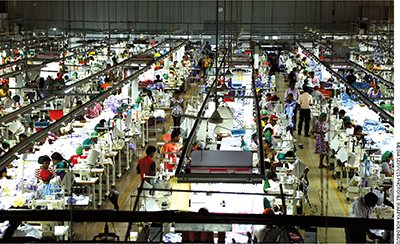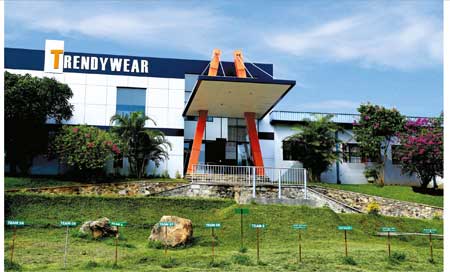SECTOR PERSPECTIVES
Eye on the Environment
Ramya Holdings notes the importance of focussing on quality and sustainability
Q: Is the prevailing export strategy acceptable given the realities of global markets?
A: With certain adjustments, the prevailing export strategy can be considered realistic in meeting the present realities of the global market.
There should be a focus on natural and processed food as well – especially with regard to agro-processing industry related products as the global demand remains high.
Observing the size of the global food and beverage (F&B) industry, the prevailing estimate suggests a value of between US$ 2.2 and 4.8 trillion.
It’s clear that there is potential and the Sri Lankan export sector has not reached its full potential globally.
The F&B industry in Sri Lanka encompasses 110 manufacturing facilities and marketing companies, and it exported goods to the value of 242.2 million dollars in 2019 and US$ 251.6 million in 2018, according to the Export Development Board (EDB) – this represented only 2.1 percent of the total goods exported.
In my view, the EDB should collaborate with foreign missions abroad to cultivate more meaningful and proactive relationships, and develop national export commodities. Similarly, locally, we have to diversify our offering with more R&D to create new product lines and extend this to new markets.
If large players could collaborate with local communities, and create small commodities such as handmade paper, soap and incense – by adhering to quality controls and standards, with the participation of communities from the north, east and south (especially in areas such as Jaffna and Monaragala) – this would diversify the offering.
Large companies can add value to the goods, package and export them, while also helping communities develop and strengthen themselves financially.
In terms of the services sector, business has declined but the prospects for knowledge process outsourcing (KPO) related services are in need of focus.
Q: Have adequate measures been taken to simplify the processes related to export activity?
A: The existing export related facilitation upgrades are commendable given the efforts of the public sector – such as the establishment of the Trade Information Portal where almost all the export information is provided
In addition, the added step-by-step functionality, listening to the voices of exporters and private sector stakeholders, and resolving issues of representation in the international arena are commendable.
 Indeed, the EDB is performing commendably, and we have noted that some of the previous mandatory inspections for certain exports have been made simple and logical – but we have a long way to go nationally. Economic forerunners in the region – viz. Bangladesh and Vietnam – have experienced exponential growth over time and to compete, Sri Lanka needs to become a one stop shop exporting value added goods. A single national window is the timely need for Sri Lankan exporters.
Indeed, the EDB is performing commendably, and we have noted that some of the previous mandatory inspections for certain exports have been made simple and logical – but we have a long way to go nationally. Economic forerunners in the region – viz. Bangladesh and Vietnam – have experienced exponential growth over time and to compete, Sri Lanka needs to become a one stop shop exporting value added goods. A single national window is the timely need for Sri Lankan exporters.
Q: Are local exporters doing enough to foray into emerging markets?
A: Diversification of Sri Lanka’s export basket is a mantra that has been chanted for a long time but we have seldom been able to do this and expand to other markets. Our dominant markets continue to be the UK, EU and US.
Since of late, some companies have been able to penetrate South Africa and Sri Lankan tea has expanded its reach from the Middle East to Central Europe as well.
However, our overall focus on the East Asian market is limited and should be the way forward for exporters. We also need to penetrate Scandinavian countries with value added products. A combined effort will go a long way towards propping up the national economy.
Q: Do quality management and environmental concerns receive adequate attention vis-à-vis exports?
A: The main objectives of quality management systems (QMS) and environmental management systems (EMS) are to extend the reach of Sri Lankan exports globally.
 QMS – which complies with ISO 9001:2015 – and EMS with ISO 14001:2015 were adopted by Sri Lankan companies and are requirements for several foreign buyers. The apparel industry is required to adopt both systems to comply with international and environmental standards. We should remember that Sri Lanka has been able to remain in good stead for ensuring ethical labour and retention thanks to brands such as MAS and Dilmah, which have garnered a positive reputation for the country.
QMS – which complies with ISO 9001:2015 – and EMS with ISO 14001:2015 were adopted by Sri Lankan companies and are requirements for several foreign buyers. The apparel industry is required to adopt both systems to comply with international and environmental standards. We should remember that Sri Lanka has been able to remain in good stead for ensuring ethical labour and retention thanks to brands such as MAS and Dilmah, which have garnered a positive reputation for the country.
Sadly, several other Sri Lankan companies are lagging behind in their sustainable corporate strategies, which could address many environmental issues at home. Doing so will uplift the corporate sphere as a whole rather than only the export sector.
Environmental certifications and compliance are in place for several exports, without which buyers would not purchase Sri Lankan exports. These encompass perishables, food and apparel among other commodities.
Sri Lanka’s greatest supply chain vulnerability – and the largest drain on its foreign exchange reserves – is its dependence on imported oil and coal despite bountiful cleaner sources. Government incentives exist but companies are not doing enough to make use of them and transition to cleaner alternatives.





